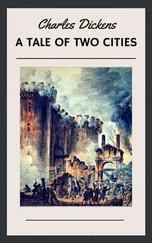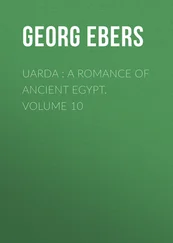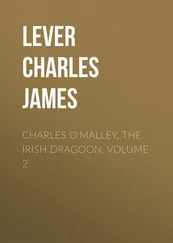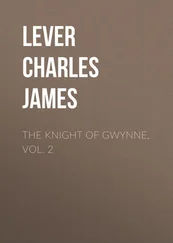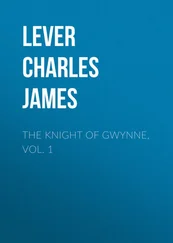Charles Bucke - Ruins of Ancient Cities (Vol. 2 of 2)
Здесь есть возможность читать онлайн «Charles Bucke - Ruins of Ancient Cities (Vol. 2 of 2)» — ознакомительный отрывок электронной книги совершенно бесплатно, а после прочтения отрывка купить полную версию. В некоторых случаях можно слушать аудио, скачать через торрент в формате fb2 и присутствует краткое содержание. Жанр: foreign_antique, foreign_prose, на английском языке. Описание произведения, (предисловие) а так же отзывы посетителей доступны на портале библиотеки ЛибКат.
- Название:Ruins of Ancient Cities (Vol. 2 of 2)
- Автор:
- Жанр:
- Год:неизвестен
- ISBN:нет данных
- Рейтинг книги:4 / 5. Голосов: 1
-
Избранное:Добавить в избранное
- Отзывы:
-
Ваша оценка:
- 80
- 1
- 2
- 3
- 4
- 5
Ruins of Ancient Cities (Vol. 2 of 2): краткое содержание, описание и аннотация
Предлагаем к чтению аннотацию, описание, краткое содержание или предисловие (зависит от того, что написал сам автор книги «Ruins of Ancient Cities (Vol. 2 of 2)»). Если вы не нашли необходимую информацию о книге — напишите в комментариях, мы постараемся отыскать её.
Ruins of Ancient Cities (Vol. 2 of 2) — читать онлайн ознакомительный отрывок
Ниже представлен текст книги, разбитый по страницам. Система сохранения места последней прочитанной страницы, позволяет с удобством читать онлайн бесплатно книгу «Ruins of Ancient Cities (Vol. 2 of 2)», без необходимости каждый раз заново искать на чём Вы остановились. Поставьте закладку, и сможете в любой момент перейти на страницу, на которой закончили чтение.
Интервал:
Закладка:
The Venetians obtained possession in 1460. In 1495 it surrendered to Bajazet, but was again taken by the Venetians, under Morozini, in 1586, after a month’s siege, and became the head-quarters of that nation, in the Morea. In 1714, it was treacherously given up to Ali Coumourgi, and was the seat of Turkish government, and residence of the Pasha of the Morea; till Tripolizzi was selected as being more central; when it became subject to the Bey of Argos. The crescent remained uninterruptedly flying on this fortress, till the 12th of December 1822, when it surrendered to the Greeks, after a long and tedious blockade; the Turkish garrison having been reduced to such a state of starvation, as to feed on the corpses of their companions. In 1825, Ibrahim Pasha made a fruitless attempt to surprise the place; and it has been the strong-hold of the Greeks in their struggle for liberty. In April, 1826, the commission of government held their sittings here; but were obliged to retire to Ægina, on account of civil dissentions, and two of the revolted chiefs being in possession of the Palamadi. During the presidency of Capo d’Istrias, who always resided, and was assassinated in the town, it again became the seat of government; and on the 31st of January, 1833, Otho, Prince of Bavaria, arrived here, as first king of restored Greece.
The strength of Napoli is the citadel, which is called the Palamadi, over whose turreted walls a few cypresses raise their sombre heads. It stands on the easternmost and highest elevation of the promontory, and completely overhangs and commands the town. To all appearance it is impregnable, and, from its situation and aspect, has been termed the Gibraltar of Greece. It is seven hundred and twenty feet above the sea; and has only one assailable point, where a narrow isthmus connects it with the main land; and this is overlooked by a rocky precipice.
Mr. Dodwell made fruitless inquiries in respect to the caves and labyrinths near Nauplia, which are said to have been formed by the Cyclops; but a minute examination is neither a safe nor easy undertaking. “The remains that are yet unknown,” says he, “will be brought to light, when the reciprocal jealousy of the European powers permits the Greeks to break their chains, 19 19 This was written in 1806, and published in 1819.
and to chase from their outraged territory that host of dull oppressors, who have spread the shades of ignorance over the land that was once illuminated by science, and who unconsciously trample on the venerable dust of the Pelopidæ and the Atridæ.”
Nauplia is a miserable village; the houses have nothing peculiar about them, but are built in the common form of the lowest habitations of the villages of France and Savoy. The inhabitants are indolent. “The indolence of the Napolitans,” says M. La Martine, “is mild, serene, and gay – the carelessness of happiness; while that of the Greek is heavy, morose, and sombre; it is a vice, which punishes itself.” 20 20 Pausanias; Dodwell; La Martine.
NO. V. – NEMEA
A town of Argolis, greatly distinguished by the games once celebrated there. These games (called the Nemean games) were originally instituted by the Argives in honour of Archemorus, who died from the bite of a serpent; and, afterwards, renewed in honour of Hercules, who in that neighbourhood is said to have destroyed a lion by squeezing him to death.
These games consisted of foot and horse races, and chariot races; boxing, wrestling, and contests of every kind, both gymnastic and equestrian. They were celebrated on the 12th of our August, on the 1st and 3rd of every Olympiad; and continued long after those of Olympia were abolished.
In the neighbouring mountains is still shown the den of the lion, said to have been slain by Hercules; near which stand the remains of a considerable temple, dedicated to Jupiter Nemeus and Cleomenes, formerly surrounded by a grove of cypresses.
Of this temple three columns only are remaining. These columns, two of which belonging to the space between antæ, support their architrave. These columns are four feet six inches and a half in diameter, and thirty-one feet ten inches and a half in height, exclusive of the capitals. The single column is five feet three inches diameter, and belongs to the peristyle. The temple was hexastyle and peripteral, and is supposed to have had fourteen columns on the sides. The general intercolumniation is seven feet and a half, and those at the angles five feet eleven inches and a quarter. It stands upon three steps, each of which is one foot two inches in height. The capital of the exterior column has been shaken out of its place, and will probably ere long fall to the ground. “I have not seen in Greece,” continues Mr. Dodwell, “any Doric temple, the columns of which are of such slender proportions as those of Nemea. The epistylia are thin and meagre, and the capitals too small for the height of the columns. It is constructed of a soft calcareous stone, which is an aggregate of sand and small petrified shells, and the columns are coated with a fine stucco. Pausanias praises the beauty of the temple; but, even in his time, the roof had fallen, and not a single statue was left.”
No fragments of marble are found amongst the ruins, but an excavation would probably be well repaid, as the temple was evidently thrown down at one moment, and if it contained any sculptured marbles, they are still concealed by the ruins.
Near the temple are several blocks of stones, some fluted Doric frusta, and a capital of small dimensions. This is supposed to have formed part of the sepulchre of Archemorus. Mr. Dodwell, however, found no traces of the tumulus of Lycurgus, his father, king of Nemea, mentioned by Pausanias, nor any traces of the theatre and stadium.
Beyond the temple is a remarkable summit, the top of which is flat, and visible in the gulf of Corinth. On one side is a ruinous church, with some rubbish; perhaps where Osspaltes and his father are said to have been buried. Near it is a very large fig-tree. To this a goatherd repaired daily before noon with his flock, which huddled together in the shade until the extreme heat was over, and then proceeded orderly to feed in the cool upon the mountain.
“Nemea,” continues Mr. Dodwell, “is more characterised by gloom than most of the places I have seen. The splendour of religious pomp, and the long animation of gymnastic and equestrian exercises, have been succeeded by the dreary vacancy of a death-like solitude. We saw no living creatures but a ploughman and his oxen, in a spot which was once exhilarated by the gaiety of thousands, and resounded with the shouts of a crowded population 21 21 Barthelemy; Dodwell; Rees; Brewster.
.”
NO. VI. – NINEVEH
Of Nineveh, the mighty city of old,
How like a star she fell and pass’d away!
Atherstone.The Assyrian empire was founded by Ashur, the son of Shem, according to some writers; but according to others, by Nimrod; and to others, by Ninus.
Ninus, according to Diodorus Siculus, is to be esteemed the most ancient of the Assyrian kings. Being of a warlike disposition, and ambitious of that glory which results from courage, says he, he armed a considerable number of young men, that were brave and vigorous like himself; trained them up in laborious exercises and hardships, and by that means accustomed them to bear the fatigues of war patiently, and to face dangers with intrepidity. What Diodorus states of Ninus, however, is much more applicable to his father, Nimrod, the son of Cush, grandson of Cham, and great-grandson of Noah; he who is signalised in scripture as having been “a mighty hunter before the Lord;” a distinction which he gained from having delivered Assyria from the fury and dread of wild animals; and from having, also, by this exercise of hunting, trained up his followers to the use of arms, that he might make use of them for other purposes more serious and extensive.
Читать дальшеИнтервал:
Закладка:
Похожие книги на «Ruins of Ancient Cities (Vol. 2 of 2)»
Представляем Вашему вниманию похожие книги на «Ruins of Ancient Cities (Vol. 2 of 2)» списком для выбора. Мы отобрали схожую по названию и смыслу литературу в надежде предоставить читателям больше вариантов отыскать новые, интересные, ещё непрочитанные произведения.
Обсуждение, отзывы о книге «Ruins of Ancient Cities (Vol. 2 of 2)» и просто собственные мнения читателей. Оставьте ваши комментарии, напишите, что Вы думаете о произведении, его смысле или главных героях. Укажите что конкретно понравилось, а что нет, и почему Вы так считаете.


